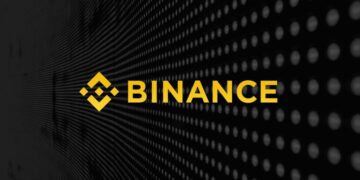SWIFT is a funds colossus. It operates throughout greater than 200 nations, has 11,000-plus monetary establishment purchasers and transmits some 8.4 billion monetary messages yearly. It’s the international chief in cross-border bank-to-bank funds and not too long ago performed a key position within the West’s financial sanctions on Russia.
That doesn’t imply the Belgium-based cooperative is resistant to disruption tremors, nonetheless. Critics have lengthy maintained the interbank messaging system, based within the Seventies, is “outdated, rigid, gradual, and more and more vulnerable to cyberattacks.” In Could, Mastercard CEO Michael Miebach solid doubt upon SWIFT’s capability to outlive the following 5 years. In the meantime, it continues to be menaced by a rising tide of blockchain-based cost networks on one aspect and an anticipated torrent of central financial institution digital currencies (CBDCs) on the opposite.
However, final week, in an indication that even entrenched legacy monetary networks can (presumably) change their stripes, SWIFT confirmed a proof-of-concept undertaking with blockchain oracle supplier Chainlink. If all goes nicely, SWIFT’s financial institution customers may simply entry and switch digital belongings on a number of blockchain platforms. Days earlier, SWIFT additionally introduced it was utilizing fintech-firm Symbiont’s enterprise blockchain platform to enhance its messaging for company occasions like dividend funds and mergers.
These developments increase an intriguing query: Slightly than partaking in a zero-sum battle to the demise, are conventional finance (TradFi) and decentralized finance (DeFi) corporations truly converging — i.e., shifting towards a typical center floor that features tokenized belongings, DeFi, interoperability and, sure, regulation?
Co-opting an existential menace?
“All monetary items will transfer throughout blockchain networks sooner or later,” Matthew Hougan, chief funding officer at Bitwise Asset Administration, advised Cointelegraph. “It’s not shocking to see legacy corporations trying to undertake and/or co-opt a know-how that represents a basic menace to their existence; in actual fact, it ought to be applauded.”
After all, that is only a pilot program. Hougan added, “It’s not like SWIFT bought blockchain faith in a single day and is changing all their actions to DLT.” However, it’s a begin, and for that, the community ought to be applauded, he urged.
On this quickly evolving technological world, “there is no such thing as a place for binary viewpoints that embrace an ‘I win, you lose’ mentality,” particularly inside its capital markets and finance sector, Mark Smith, CEO and co-founder of Symbiont, advised Cointelegraph, additional including:
“Finally what finally ends up being the norm is often a hybrid, and we undoubtedly see a melding unfolding that may borrow from the perfect that TradFi and DeFi have to supply.”
Jonathan Solé, technique director at SWIFT, talking ultimately week’s Smartcon 2022 conference in New York, acknowledged an “simple curiosity” on the a part of institutional buyers in digital belongings “whether or not these are stablecoins, CBDCs or something that you could tokenize on the capital markets area” together with equities and bonds.
Banks and different TradFi establishments need to SWIFT to “bridge the hole” between their infrastructure servicers, like exchanges, custodians and clearing homes, “and all of those new blockchains which can be going to offer these companies” for tokenized belongings, he added at a panel titled “Bridging Conventional Finance and DeFi.”
The session was moderated by Chainlink CEO Sergey Nazarov, who famous that SWIFT possessed the TradFi world’s “largest personal key infrastructure,” including:
“There isn’t any cause to eliminate that non-public key infrastructure that already securely indicators transactions to maneuver round trillions of {dollars} in worth. All of these requirements can merely have an addition made to them that claims: blockchain stuff.”
However, SWIFT “would not essentially wish to construct an integration with each single chain on the planet,” added Nazarov, which was why it was exploring Chainlink’s Cross-Chain Interoperability Protocol (CCIP) as a manner for it “to turn into interoperable throughout all blockchain environments.”
Stephen Prosperi, head of product administration and digital securities administration of DTCC, which offers clearance and settlement companies for U.S. securities markets — one other TradFi heavyweight — seconded this level. Totally different digital currencies “will stay throughout totally different chains,” and corporations like DTCC don’t wish to construct separate infrastructure to hook up with every of the 100 blockchains that host fascinating digital belongings. A central level of entry like CCIP may due to this fact be helpful.
Are cross-chain bridges safe?
The Smartcon panelists didn’t actually handle a few of the challenges related to cross-chain bridges, nonetheless, together with safety considerations. “Sure, there are safety dangers with cross-chain initiatives,” commented Hougan, “which is why you want pilot initiatives like this.”
Cross-chain bridges are designed to unravel the issue of interoperability between blockchain platforms. Blockchain networks immediately — Bitcoin, Ethereum, Solana and others — are just like the railroad programs within the nineteenth century earlier than observe gauge sizes had been standardized. Passengers and freight needed to be offloaded to a different prepare when incompatible rail traces met.
Cross-blockchain bridges are designed to unravel these types of incompatibilities, however the issue is they seem like susceptible to hacks. Some $2 billion has been stolen from bridges in 13 separate heists, according to Chainalysis, most of it this yr. Ethereum founder Vitalik Buterin, too, red-flagged cross-chain bridges not too long ago, suggesting they will allow 51% community assaults.
A key downside appears to be that the “bridges” are likely to accumulate giant quantities of “locked belongings” from totally different blockchains, some fairly obscure and never at all times constructed with superior security measures, in accordance with Elliptic’s Cross-Chain Report 2022 launched Oct. 4, which famous:
“This has made bridges a horny goal for cybercriminals. […] From January to July 2022, $1.2 billion price of cryptoassets had been stolen throughout eight bridge compromise incidents.”
Chainlink presumably believes it’s going to do a greater job with safety than cross-chain bridges have accomplished previously. Nazarov stated as a lot in post-Smartcom interviews. “That’s what CCIP seeks to unravel. And I don’t suppose it’s an intractable downside. I believe it’s a solvable downside,” he told Fortune.
Are conventional establishments prepared for tokenization?
Aside from the necessity for interoperability, are there different commonalities which can be bringing TradFi and blockchain suppliers nearer collectively? Are the capital markets prepared for tokenization, as an example, Nazarov requested panelists.
“Nicely, it’s undoubtedly right here. It’s not going to go away,” answered Solé. “We now have adopted all of our messaging requirements in order that we will make it possible for we will cater for the knowledge that’s wanted for tokenized belongings.”
“We’re truly tokenizing all several types of belongings internally,” Victor O’Laughlen, managing director and head of enterprise tokenization at Financial institution of New York Mellon (BNY), advised the panel. BNY’s broker-dealer and funding supervisor purchasers “do not wish to segregate and handle their belongings in numerous swimming pools. They wish to have one consumer expertise.” One other attraction of blockchain-enabled tokenized belongings is that they’re accessible 24/7. O’Laughlen added:
“It’s the infrastructure that at all times stays up, proper? The crypto markets have actually pushed the monetary markets to consider that. And, we’d like to have the ability to assist our purchasers at any time zone, in any location.”
Past interoperability and tokenization, there was some curiosity among the many TradFi representatives in DeFi initiatives correct — however with caveats. “If monetary companies wish to go into DeFi mode, there must be some type of regulated DeFi,” stated Solé, although some may view that as a contradiction in phrases.
Prosperi echoed the necessity for a type of “permissioned DeFi,” one which had compliance baked in. “On the finish of the day, establishments must really feel like they are not going to get busted on KYC, AML — that they know who they’re transacting with.”
BNY Mellon’s O’Laughlen noticed some positives with DeFi protocols, although. “DeFi may benefit intraday liquidity, the place liquidity is required to type of grease the wheels.” Establishments may start with lending or borrowing belongings or money, as “a few of the extra vanilla forms of [DeFi] transactions that happen between counterparties and monetary establishments can be a terrific first step.”
A lift to crypto adoption
Lastly, what, if something, does all this need to do with crypto/blockchain adoption? Ecumenical panel discussions like what occurred at Smartcon are encouraging, however will partnerships like SWIFT-Chainlink actually “speed up the adoption of DLT blockchains and profit numerous establishments everywhere in the capital markets,” as Nazarov urged?
“It’s optimistic information,” Hougan advised Cointelegraph. “Each time an entrenched incumbent acknowledges that it has to consider the implications of blockchain know-how, it makes it simpler for the following one to take action. That is one other brick within the wall.”
“Chainlink has a robust aggressive place in offering oracles and trustless information sources, and it grows by integrating these instruments into extra capital markets and funds networks,” Lex Sokolin, head economist at ConsenSys, advised Cointelegraph. “The needs of blockchains are totally different and different. Typically, I do suppose extra integration implies extra paths to adoption.”
Smith, for his half, sees a “actual maturation” of blockchain know-how throughout monetary companies, viewing it because the “connective tissue” that may make each TradFi and DeFi profitable. Blockchain know-how was created initially to offer a greater financial institution cost system, and 13 years later, it “continues to turn into extra extensively accepted and adopted amongst banks, asset managers and international markets,” Smith stated.












![Why Ethereum [ETH] address outflows may be headed for DeFi](https://cryptonoiz.com/wp-content/uploads/2023/03/AMBCrypto_An_image_of_a_stylized_Ethereum_logo_with_arrows_poin_22f2aeff-c7bb-4c7d-aec7-547a37a35e82-1-1000x600-360x180.jpg)

























